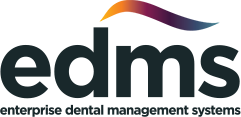(series by Peter Evans)
In Part I, I discussed the idea that dental support organizations need to collect data AND understand its context in order to successfully drive the business forward. This is especially critical for ‘Emerging DSOs’ with three or more clinics who are planning to grow to 10, 15 or more locations.
The greatest shift in the dental industry is the growth in group dental practices, specifically organizations with 10 to 20 locations, stated recently by Peter Jugoon from Henry Schein at their DSO Education Forum. By 2027, 30-50% of practices will be corporate or under group ownership.
What we’ve seen is that the complexity that comes with this growth becomes incredibly hard to manage – the core challenge of the ‘Emerging DSO’.
What do these issues look like?
- Operational and structural complexity
- Multiple legacy systems that don’t integrate
- Expensive, time-consuming manual rework by staff, and data inaccuracies
- Lack of reporting transparency or useful insights into the business
- Inconsistent application and use of programs or policy data
If you’re a dental support organization owner or you work within one, this probably sounds familiar. Think about it: how much of your operational time is spent just collecting information, as opposed to acting on it? What is the value of your time? I am sure you place a pretty high premium on it. As an entrepreneur, I know I do!

Complexity can pull anyone into the ‘Data Overload’!
And once you reach this stage of complexity, do you still trust the accuracy of the operational, clinical and financial information you’re receiving? Has your team mastered all of the systems they use day-to-day to collect it?
At EDMS we see a lot of DSOs with multiple dental practice management systems. This really complicates your IT infrastructure because all software languages (no two are the same) report differently. Are you planning to invest in conversions? That’s one very expensive way to solve that problem at $20,000+ per clinic to convert, but it produces even more issues for your staff as they scramble to absorb yet another change in their day-to-day.
For example, one of our larger clients has 18 different practice management systems inside their organization and therefore, software languages. The accountants don’t understand the reports from the other systems so they group their accounting practices around it, as the systems usually don’t integrate with accounting software. This complexity becomes a very serious problem.
Without a system in place to manage, you get operational overload: people collecting individual data points, tracking manually using spreadsheets, sending in everything separately and giving you a reporting nightmare. All of this valuable information about your business is trapped, putting you into a state of ‘data overload’.
All of these issues build as you grow your DSO business. So at what stage does this complexity and ‘data overload’ start to happen? Our experience shows us that the critical 3 – 10 clinic stage is where you need to adjust as you have traditionally run your business. What got you to this point just doesn’t work anymore.
Putting in the structure in advance solves a lot of headaches – and avoids putting you in a constant scramble to catch up. After three clinics it starts to fall apart pretty quickly without the plan to grow already in place.

Peter Evans is the CEO of EDMS Dental. See Peter’s next blog post for Part III in this series on ‘Using Data to Drive Your Dental Business’. To reach the Peter directly email peter.evans@edmsdental.com.
